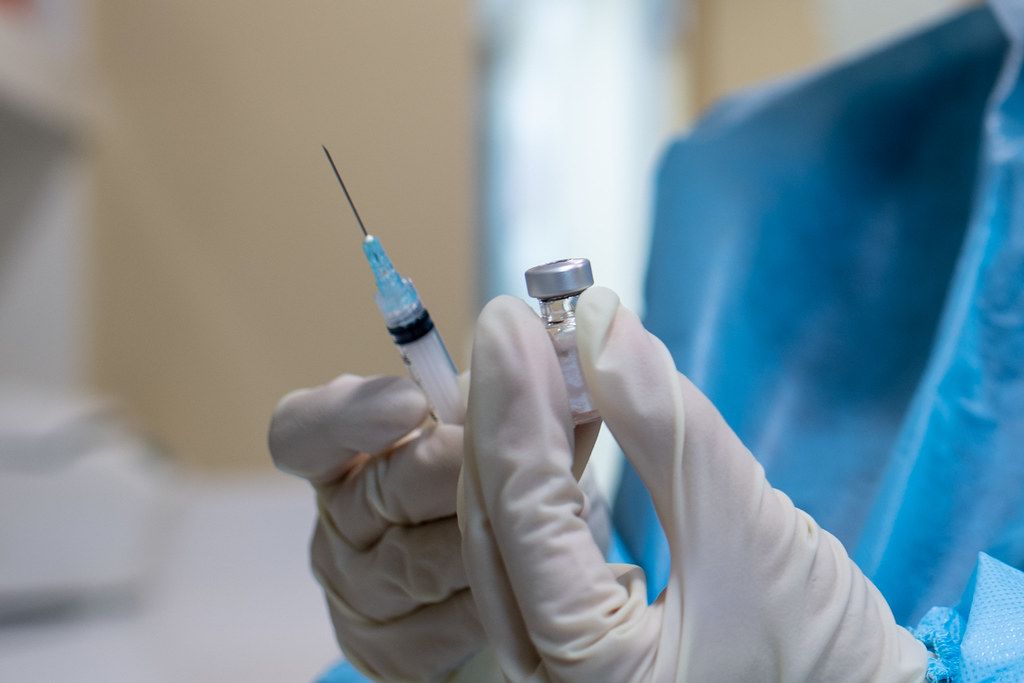Cancer Vaccine/Pembrolizumab Improves PFS in Treatment-Naive Melanoma
A novel cancer vaccine, IO102-IO103, combined with pembrolizumab, showed promising results in improving PFS for advanced melanoma.
A novel cancer vaccine, IO102-IO103, combined with pembrolizumab, showed promising results in improving PFS for advanced melanoma.

IO102-IO103, a cancer vaccine, plus pembrolizumab (Keytruda) yieleded a clinically menaingful improvement in median progression-free survival (PFS) vs pembrolizumab alone in patients with treatment-naïve advanced melanoma, according to results from the phase 3 IOB-013/KN-D18 trial (NCT05155254) presented at the European Society for Medical Oncology Congress 2025.
“These data support the potential benefit of this immune-modulatory cancer vaccine in combination with pembrolizumab for patients with untreated, advanced melanoma,” stated Jessica C. Hassel, MD, in her presentation of the findings at the meeting.
Hassel works in the Department of Dermatology at Heidelberg University, as well as at the National Centre for Tumor Diseases in Heidelberg, Germany.
After a median follow-up of approximately two years, the combination of IO102-IO103 and pembrolizumab improved median PFS by 8.4 months compared with pembrolizumab monotherapy. Median PFS in the experimental arm was 19.4 months (95% CI, 9.7–not reached [NR]) vs 11.0 months (95% CI, 6.0–14.8) for pembrolizumab alone (HR, 0.77; 95% CI, 0.58-1.00; P = .0558). Although the pre-specified statistical significance threshold was not met, the PFS improvement favored the combination regimen across all predefined subgroups.
Among patients with PD-L1–negative disease, the median PFS was 16.6 months with the combination vs 3.0 months with pembrolizumab alone (HR, 0.54; 95% CI, 0.35-0.85).
Additionally, the overall response rate (ORR) was 44.8% in the vaccine arm and 41.2% in the pembrolizumab monotherapy arm.
Safety Findings from the Phase 3 IOB-013/KN-D18 Trial
It was further reported that the combination regimen did not result in an increased frequency of immune-mediated or treatment-related adverse events (AEs) compared with pembrolizumab monotherapy.
Immune-mediated AEs occurred in 34.0% of patients receiving the combination versus 38.4% receiving pembrolizumab alone, and grade 3 or higher treatment-related AEs occurred in 14.5% and 15.6% of patients, respectively. Injection-site reactions related to the vaccine were predominantly reported to be grades 1 and 2 in severity.
IO102-IO103 Mechanism of Action
IO102-IO103, Hassel explained, is an off-the-shelf immune-modulatory cancer vaccine designed to target both tumor cells and immune-suppressive cells within the tumor microenvironment. The vaccine stimulates activation and expansion of T cells against IDO1-positive and PD-L1–positive cells, enhancing antitumor immune activity.
IOB-013/KN-D18 Trial Design, Patient Eligibility, and Additional Efficacy Results
The phase 3 IOB-013/KN-D18 trial enrolled 407 patients with treatment-naïve advanced melanoma across approximately 100 global sites. Patients were randomized 1:1 to receive either subcutaneous IO102-IO103 (85 μg of each component) in combination with pembrolizumab (200 mg intravenously every three weeks; n = 203) or pembrolizumab alone (n = 204) for up to two years.
The primary end point was PFS as assessed by blinded independent central review (BICR) per RECIST v1.1, with a data cutoff of May 30, 2025. Secondary end points included overall survival (OS), ORR by BICR, duration of response (DoR), and safety. Vaccine-specific immune response in peripheral blood mononuclear cells served as an exploratory end point.
Eligible patients had unresectable stage III or metastatic stage IV melanoma, measurable disease, and an ECOG performance status of 0 or 1. Prior adjuvant or neoadjuvant therapy was permitted if the last dose occurred more than six months before study entry. Patients with stable central nervous system (CNS) disease were eligible.
Baseline demographics and disease characteristics were balanced between treatment arms. The median age was 71 years (range, 59-78) in the combination arm and 69 years (range, 60-78) in the pembrolizumab-alone arm. Most patients were male (combination, 67.0%; pembrolizumab-alone, 58.8%) and had cutaneous melanoma (86.2%; 85.3%). PD-L1 positivity was observed in 63.5% and 62.3% of patients in the respective arms.
According to ClinicalTrials.gov, the trial began in May 2022, reached its primary completion in May 2025. The study is expected to conclude in September 2027.
References
- Hassel, JC, Arance, AM, Carlino, MS, et al., LBA53 - IO102-IO103 cancer vaccine plus pembrolizumab for first-line (1L) advanced melanoma: Primary phase III results (IOB-013/KN-D18). Presented at the European Society for Medical Oncology (ESMO) Congress 2025; October 17-21, 2025; Berlin, Germany. Abstract LBA53.
- IO102-IO103 in Combination With Pembrolizumab Versus Pembrolizumab Alone in Advanced Melanoma (IOB-013 / KN-D18), clinicaltrials.gov., accessed Oct. 20, 2025; https://clinicaltrials.gov/study/NCT05155254